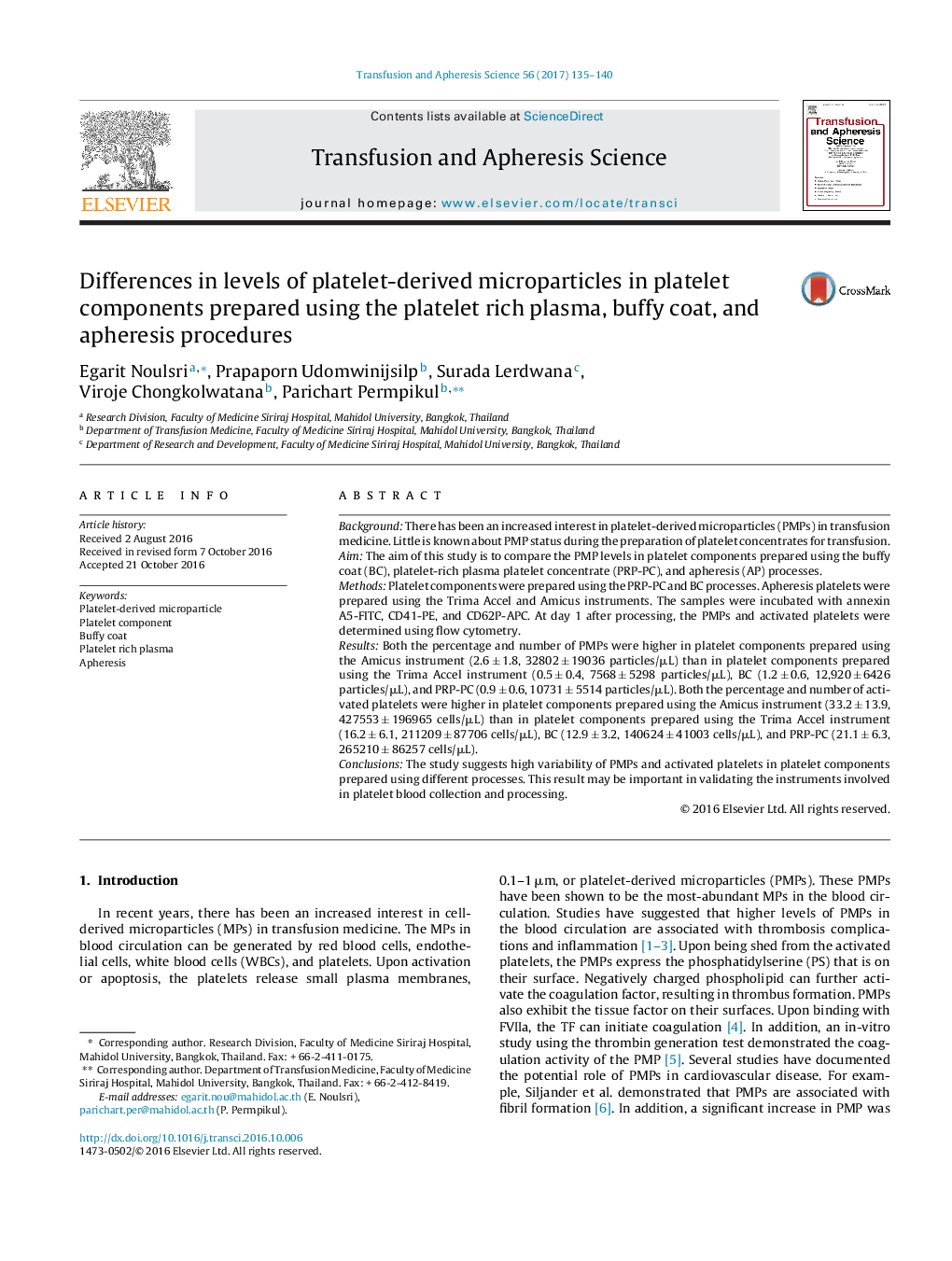| کد مقاله | کد نشریه | سال انتشار | مقاله انگلیسی | نسخه تمام متن |
|---|---|---|---|---|
| 5664706 | 1407718 | 2017 | 6 صفحه PDF | دانلود رایگان |
BackgroundThere has been an increased interest in platelet-derived microparticles (PMPs) in transfusion medicine. Little is known about PMP status during the preparation of platelet concentrates for transfusion.AimThe aim of this study is to compare the PMP levels in platelet components prepared using the buffy coat (BC), platelet-rich plasma platelet concentrate (PRP-PC), and apheresis (AP) processes.MethodsPlatelet components were prepared using the PRP-PC and BC processes. Apheresis platelets were prepared using the Trima Accel and Amicus instruments. The samples were incubated with annexin A5-FITC, CD41-PE, and CD62P-APC. At day 1 after processing, the PMPs and activated platelets were determined using flow cytometry.ResultsBoth the percentage and number of PMPs were higher in platelet components prepared using the Amicus instrument (2.6 ± 1.8, 32802 ± 19036 particles/μL) than in platelet components prepared using the Trima Accel instrument (0.5 ± 0.4, 7568 ± 5298 particles/μL), BC (1.2 ± 0.6, 12,920 ± 6426 particles/μL), and PRP-PC (0.9 ± 0.6, 10731 ± 5514 particles/μL). Both the percentage and number of activated platelets were higher in platelet components prepared using the Amicus instrument (33.2 ± 13.9, 427553 ± 196965 cells/μL) than in platelet components prepared using the Trima Accel instrument (16.2 ± 6.1, 211209 ± 87706 cells/μL), BC (12.9 ± 3.2, 140624 ± 41003 cells/μL), and PRP-PC (21.1 ± 6.3, 265210 ± 86257 cells/μL).ConclusionsThe study suggests high variability of PMPs and activated platelets in platelet components prepared using different processes. This result may be important in validating the instruments involved in platelet blood collection and processing.
Journal: Transfusion and Apheresis Science - Volume 56, Issue 2, April 2017, Pages 135-140
